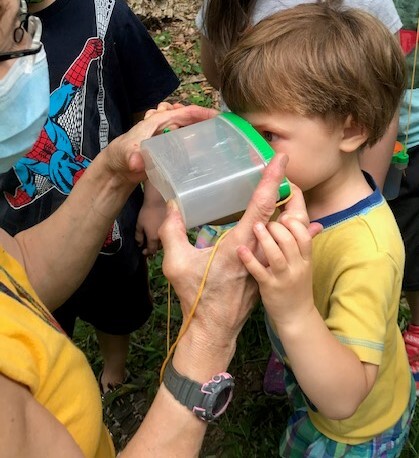
Tag Archives: schuylkill center for environmental education


Schuylkill Saturday: Self-Guided Nature Exploration for Families

Roxborough’s River and Water: A History
For almost 100 years the Roxborough Pumping Station, just above the Flat Rock Dam, was a landmark on the Schuylkill River, pumping water into two reservoirs on high ground to serve the city’s northwestern section. In this illustrated talk, Adam Levine, historian for Philadelphia Water, reveals why the system was built, how it worked, why it was abandoned, and its ultimate dereliction and demolition in 2011. River pollution and flooding, drownings, water filtration, the revitalization of the reservoirs as parkland, and the planned restoration of the canal locks at Flat Rock will also be discussed. Adam Levine has been researching the history of the city’s water system since 1998, and this brand-new talk is not to be missed. His website is phillyh2o.org.
This event is cosponsored by the Philadelphia Water Department, the Upper Roxborough Civic Association, the Roxborough Manayunk Conservancy, the Friends of the Upper Roxborough Reservoir Preserve, and Residents of the Shawmont Valley.
This event is part of #RiverDays a month-long recreational event series hosted by the Alliance for Watershed Education (AWE) of the Delaware River and supported by The William Penn Foundation. AWE is comprised of 23 environmental education centers in New Jersey, Pennsylvania, and Delaware. Each of these centers is located along a Circuit Trail or major connecting trail, and on waterways throughout the Delaware River watershed.

Schuylkill Saturday: Self-Guided Nature Exploration for Families
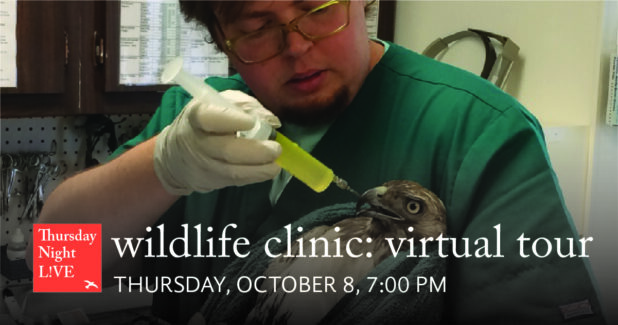
The Wildlife Clinic: A Virtual Tour
Our Wildlife Clinic treats thousands of injured, orphaned, and sick animals every year. Join us for a virtual behind-the-scenes tour with our Wildlife Rehabilitation team with Director Chris Strub and Assistant Director Liz Ellmann. Our clinic, the only one in Philadelphia, has handled over 150 different species, everything from tiny hummingbirds to massive snapping turtles. Chris and Liz will answer all your questions about how you can champion wildlife and rehabilitation in the region.

Schuylkill Saturday: Self-Guided Nature Exploration for Families

Schuylkill Saturday: Self-Guided Nature Exploration for Families

Schuylkill Saturday: Self-Guided Nature Exploration for Families
Come See the Flowers Race the Trees
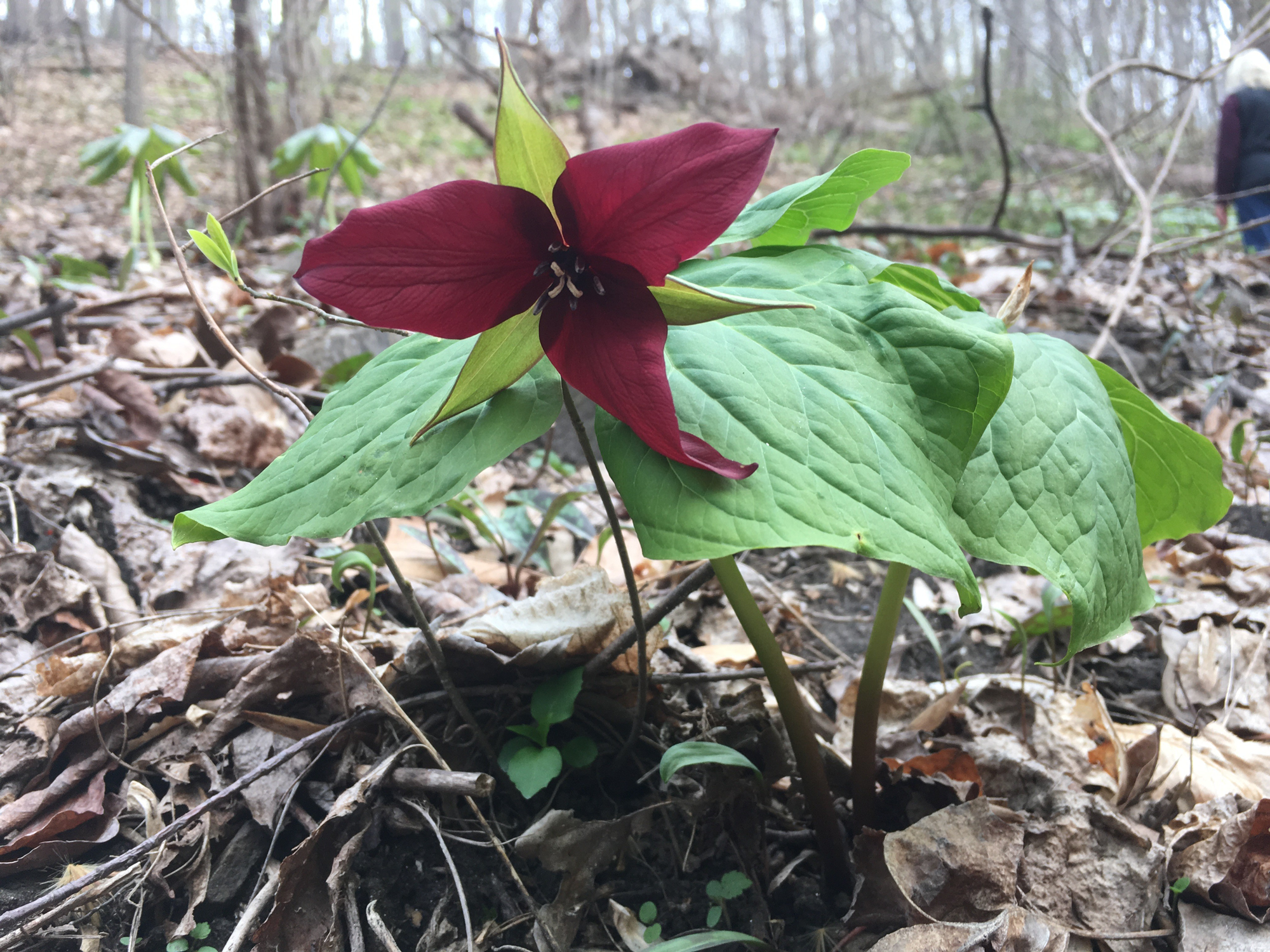
Red trillium, nicknamed wake robin up in New England, is one of the rarest wildflowers at the Schuylkill Center, and grows along the Ravine Loop.
Photo courtesy of Will Terry.
By Mike Weilbacher, Executive Director
Like all forests around us, the Schuylkill Center is in full bloom right now. You really have to see it to believe it. In fact, you can, if you simply walk down our Ravine Loop.
Like the red trillium in the accompanying photograph, an elusive and rare plant that New Englanders dubbed “wake robin,” as it bloomed there about when robins return north from their migrations (robins are year-round residents here in Roxborough).
Or the Virginia bluebells in the other photo– one of everyone’s favorites, as it is taller than many of the spring ephemerals and one of the bluest of them all. You can find it on our Ravine Loop and elsewhere across the property, and is happily one of our harder-to-miss wildflowers. I love its pink buds that open to blue flowers– two colors for the price of one.
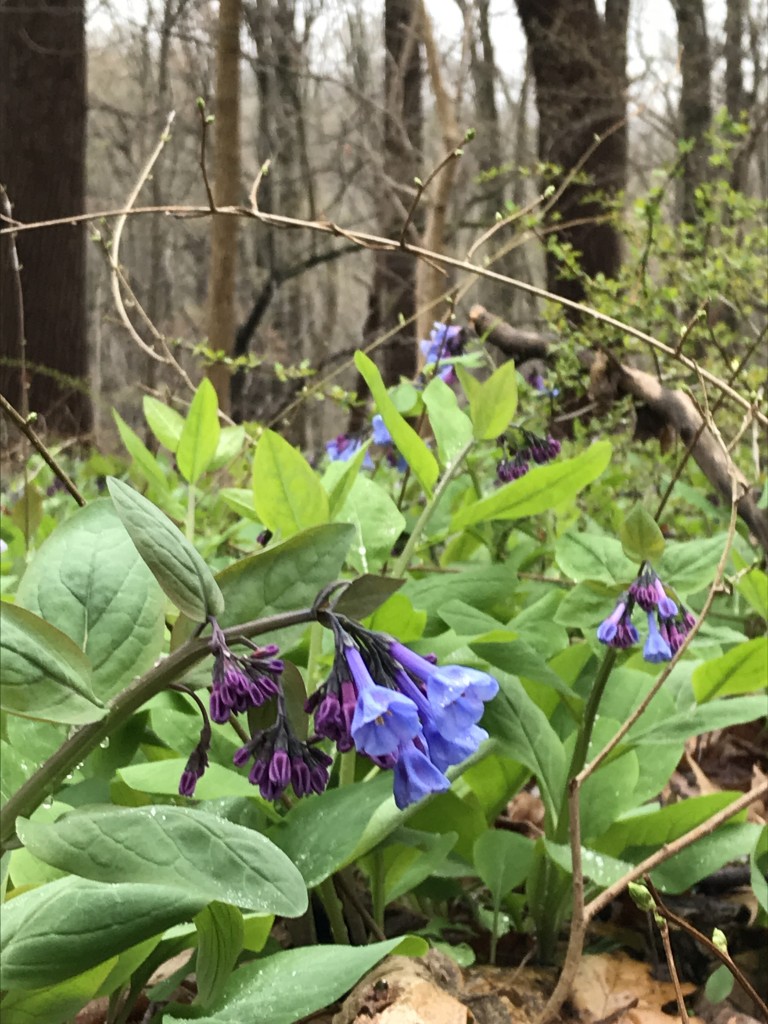
In our Wildflower Loop near our small Pollywog Pond, Virginia bluebells grow profusely.
Photo courtesy of Anna Lehr Mueser
But that’s just the beginning of the parade. There are bright yellow trout lilies, named for the spotting on their mottled leaves that resembles a trout’s back. And shooting stars, white flowers blazing across the forest floor. Jacob’s ladder, a complicated lilac-colored flower with ladder-ish leaves. Jack-in-the-pulpit, poking through the forest floor, Jack dutifully staying inside what looks like his mottled purple lectern. Solomon’s seal, named for the Biblical king, its delicate bell-like flowers dangling from zig-zags of leaves. Spring beauties, each petal a tiny white surfboard with a pink racing stripe down its middle.
And that’s just a start.
What’s amazing about these plants is the narrow window of time through which they slide. A forest in spring features trees without yet any leaves, so sunlight shines through and caresses the forest floor. Warmed by the sun, long-dormant roots and rhizomes suddenly come alive and send sprigs of growth up above the ground. These leaves photosynthesize– remember that from high school biology?– using sunlight to make sugars and send starches down into the rootstocks so they grow larger. When those rootstocks are large enough and have the resources, the plants send flowers into the world, often brightly colored to dazzle pollinating bees and butterflies.
And they coincidentally dazzle us too.
But the flowers are in a race against time– and the trees. As trees leaf out, those leaves block sunlight, form a sun-proof umbrella across the forest, and block those flowers from growing. So there is a small window of opportunity for the flowers to warm up, grow, make leaves, make flowers, get pollinated, drop seeds– and disappear for another year– before the trees leaf out.
We’ve already missed the earliest bloomers like bloodroot and skunk cabbage. But every day or every week you visit, new and different flowers will appear.
While our Visitor Center is closed, our forest is still open– park in the Hagy’s Mill parking lot if there is room (if not, park at the ballfields and walk in). Hike past our Visitor Center and head downhill through the butterfly meadow, following Ravine Loop until it curves at Smith Run; the best wildflowers are on the section of trail that parallels the stream.
When we reopen (please, God, soon!), we’ll be selling these plants for you to place in your own yard. My yard, I am happy to report, is beginning to fill with both bluebells and Solomon’s seal, and a healthy stand of May apple– it looks like a little bright green umbrella– is spreading happily. These flowers require little water or chemicals, come back stronger every year, and provide vital pollen, nectar, and food for the small critters that hold up the world, especially those pollinators you read so much about.
Spring wildflowers are racing the trees right now– come walk down our Ravine Loop, while of course practicing the required physical distancing, and see them for yourself.
Children Need Nature: Tiny Worlds Terrarium
Children Need Nature is a monthly blog column from our Nature Preschool program. Read more posts here.
When children have access to natural spaces and time to explore these spaces beautiful things happen. With nature’s diverse textures, scents, tastes, sounds, colors, and shapes, young children find playtime in natural settings compelling and aesthetically inviting. As mindful adventure seekers propelled by innate curiosity, children eagerly seek nature’s loose parts (the leaves, the flowers, the pinecones, the shells, etc.) and use them in their play. In this way, young people build an intimate understanding of the natural world, one element at a time.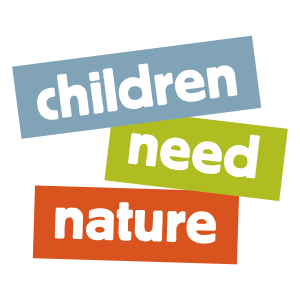
From fairy houses in the woods to shelters in the brush, children love creating tiny worlds.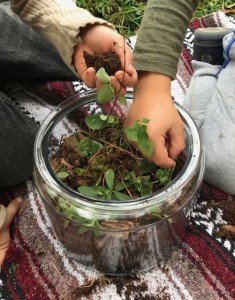
Creating a Tiny World Terrarium is a fun project to do with young children. They can build a tiny world in a jar with soil and plants sourced in familiar places and add special treasures to the mini-landscapes, too. As tiny worlds are constructed, questions spark discussions about nature and children are inspired as storytellers, imagining what life would be like living in the tiny world.
Our Nature Preschool Sugar Maples (afternoon program) created Tiny World Terrariums with layers of stone, charcoal, soil, moss, and tiny plants. We brought our terrariums to life with special eye-catching treasures such as tiny clay butterflies and snails, coins, shells, and marbles. A sprinkle of glitter keeps it glittering all year! * Biodegradable glitter is best.
Materials:
-Extra large jar with snug-fitting lid
-Terrarium charcoal
-Small rocks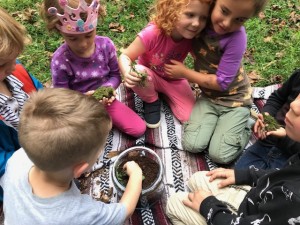
-Soil
-Tiny/young plants, moss
-Spray bottle with water
-Natural materials (bark, shells)
-Children’s “treasures”
-Glitter (if desired) * Biodegradable glitter is best.
Steps:
-Gather materials you need for the project…
-Layer small rocks on the bottom of the jar.
-Create a layer of charcoal above the rocks…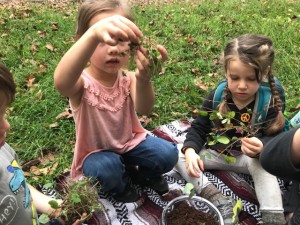
-Add a generous layer of soil above the charcoal.
-Add tiny plants to the layer of soil. Spray gently with water.
-Add moss.
-Decorate the tiny world with treasures.
-Spray again until top layer of soil is wet and soft.
-Whisper a special message to the tiny world, add some glitter (* biodegradable glitter is best.), and seal with lid.
-Set your tiny world in a sunny place where you and your child can observe change over time. (P.S.You do not need to add water unless you cannot achieve the humidity that your plants need; condensation should form on the inside of the jar and effectively “rain” on the plants when sealed and set by a sunny window. If your plants look dry and condensation is not visible, open your terrarium and spray with water before sealing for a second time).
About the author: 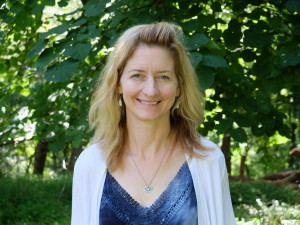 Ann Ward is a teacher with Nature Preschool. As a compassionate early childhood educator and passionate advocate for children and nature, Ann has over thirty years experience in early childhood education and a Masters of Education in Early Childhood Education degree from West Chester University, where she graduated summa cum laude after completing action research in early learning and loose parts nature play. Ann is also the founder and lead educator of Winged Wonders Education, a live monarch butterfly educational program reconnecting people with the natural world one butterfly at a time.
Ann Ward is a teacher with Nature Preschool. As a compassionate early childhood educator and passionate advocate for children and nature, Ann has over thirty years experience in early childhood education and a Masters of Education in Early Childhood Education degree from West Chester University, where she graduated summa cum laude after completing action research in early learning and loose parts nature play. Ann is also the founder and lead educator of Winged Wonders Education, a live monarch butterfly educational program reconnecting people with the natural world one butterfly at a time.


